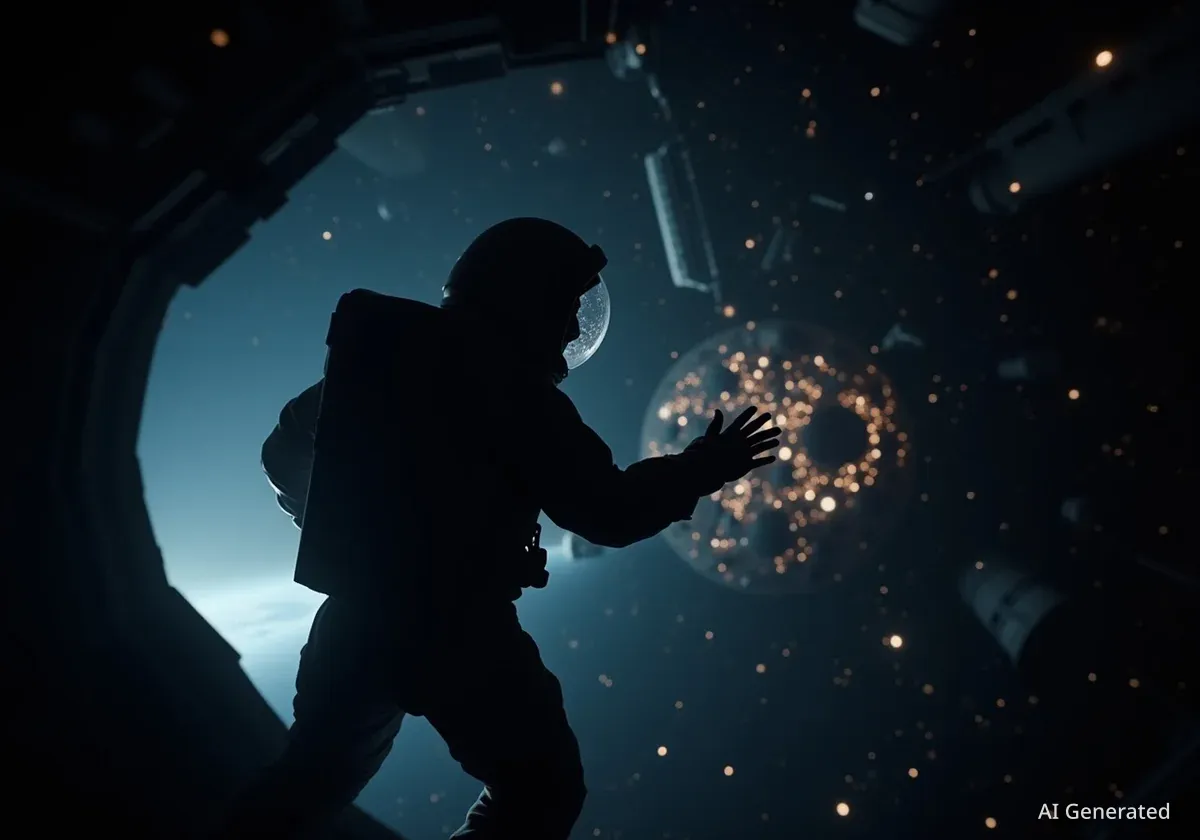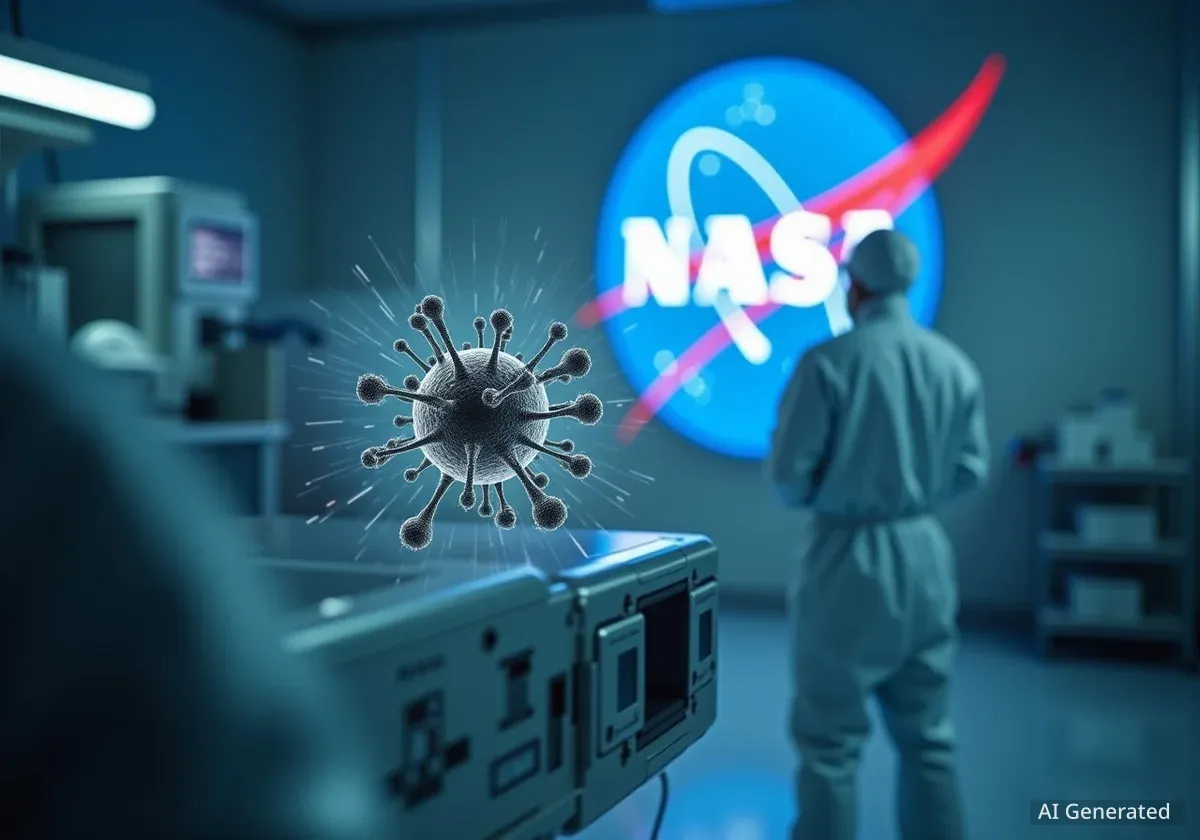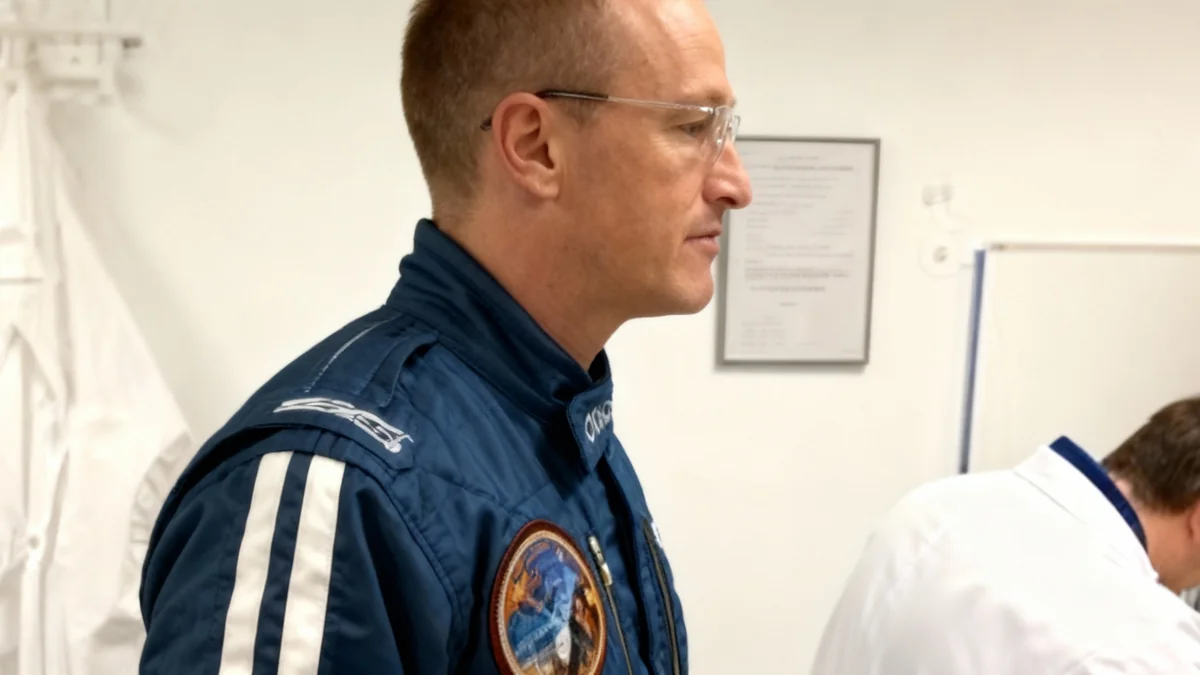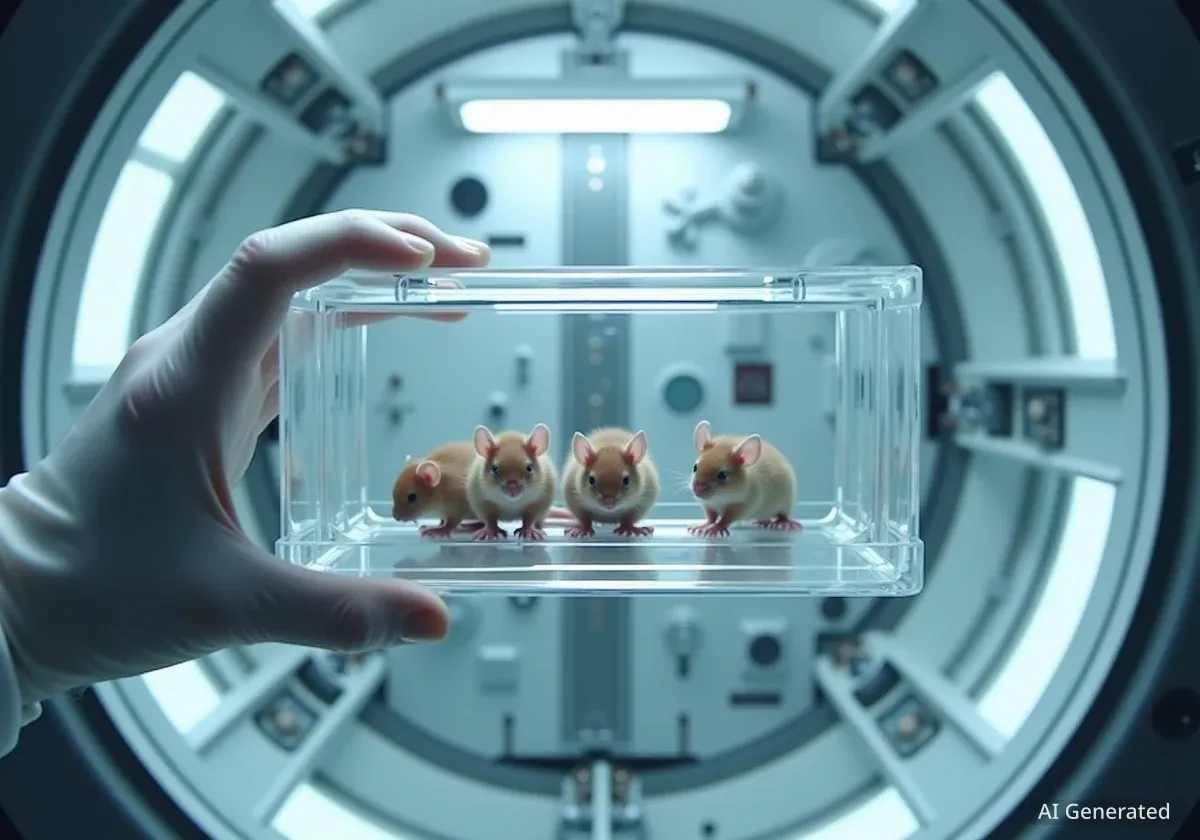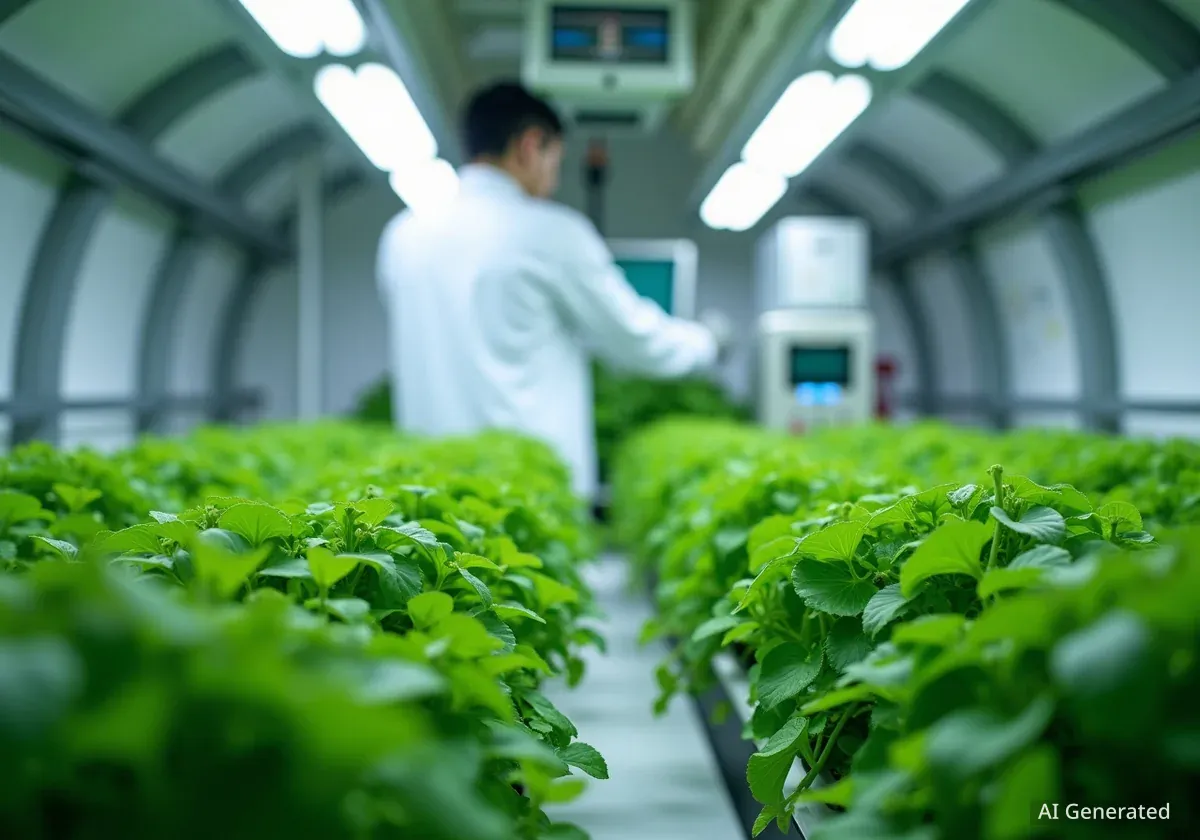NASA's Artemis II mission, scheduled for February 2025, will send four astronauts on a journey around the Moon, marking humanity's farthest venture into space. While testing the Orion spacecraft is a primary goal, the crew will also serve as subjects in a series of critical experiments designed to understand the effects of deep space on the human body.
Key Takeaways
- The Artemis II mission will fly four astronauts around the Moon to test spacecraft systems and prepare for future lunar landings.
- A major focus of the mission is studying the impact of deep space radiation and microgravity on astronaut health.
- Three key experiments will monitor sleep, stress, immune function, and cellular response to the harsh space environment.
- Data collected will be crucial for developing safety measures for long-duration missions to the Moon and Mars.
Preparing for Humanity's Return to the Moon
The Artemis II mission represents a significant step in NASA's plan to establish a long-term human presence on the Moon. The four-person crew includes NASA astronauts Victor Glover, Reid Wiseman, and Christina Koch, along with Canadian Space Agency astronaut Jeremy Hansen. Their 10-day flight will take them farther from Earth than any human has ever traveled.
This mission serves as a critical dress rehearsal for Artemis III, which aims to land astronauts on the lunar surface for the first time since the Apollo 17 mission in 1972. Before that can happen, NASA must ensure the Orion spacecraft's life support, communication, and navigation systems function perfectly in the deep space environment.
A New Era of Exploration
Unlike the Apollo missions of the 1960s and '70s, which focused on reaching the Moon and collecting geological samples, the Artemis program has a broader objective. It aims to build sustainable infrastructure in lunar orbit and on the surface, paving the way for eventual human missions to Mars. Understanding the physiological and psychological toll of deep space travel is fundamental to this goal.
The Human Element as a Scientific Priority
Beyond testing hardware, Artemis II places a strong emphasis on human biology. Earth's magnetic field protects us from the constant bombardment of cosmic rays and harmful solar radiation. Once astronauts leave this protective bubble, their bodies are exposed to an environment for which they have not evolved.
"Our top priority is to bring our friends safely home," said Jacob Bleacher, NASA's chief exploration scientist, at a recent press conference. "To do that, we have developed an integrated research campaign that will support all of our future Artemis missions to make sure that we can travel safely in space and bring everybody home."
ARCHeR: Monitoring Well-being in Real-Time
One of the key studies is ARCHeR, which stands for Artemis Research for Crew Health & Readiness. For this experiment, each astronaut wears a specialized watch-like device. This sensor will continuously monitor metrics related to their sleep patterns, stress levels, and cognitive performance.
Data collection begins long before launch and will continue throughout the mission and after their return to Earth. This comprehensive dataset will provide invaluable insights into how the stresses of spaceflight affect an astronaut's physical and mental readiness. Canadian astronaut Jeremy Hansen acknowledged the crew's unique role in this research.
"We are the biggest experiment flying, the individual," Hansen told CBC News. "We're spending quite a bit of time now collecting data on our bodies... We are the experiment."
Studying Deep Space Effects at the Cellular Level
To understand the impact of deep space on a microscopic level without invasive procedures, NASA developed an experiment called AVATAR (A Virtual Astronaut Tissue Analog Response). This innovative approach uses biological stand-ins for the astronauts.
Researchers collected blood cells from each of the four crew members on Earth. These cells were placed on a small chip, about the size of a USB drive, which will fly with them on the Orion spacecraft. This chip effectively serves as an avatar for their bone marrow, a part of the body crucial for immune function and highly sensitive to radiation.
Why Bone Marrow is Critical
Bone marrow produces red blood cells, white blood cells, and platelets, forming the foundation of the human immune system. Damage from radiation can impair its function, leaving astronauts more vulnerable to illness on long-duration missions.
"Once we understand what's happening in deep space, especially in the radiation environment... it's really important to me and to the agency in understanding how we can protect our astronauts," explained Lisa Carnell, director of NASA's biological and physical sciences division. She noted that this research could lead to personalized countermeasures for space travelers and may even have applications for health treatments on Earth.
Saliva Samples and Immune System Response
A third simple yet powerful experiment involves the collection of saliva. Astronauts will use special paper contained in small booklets to collect dry saliva samples throughout their journey. According to Jacob Bleacher, saliva acts as "a window into how our immune system is functioning."
Analysis of these samples back on Earth will reveal how the astronauts' immune systems react to the combined stresses of radiation, microgravity, and isolation. Scientists will look for changes in hormones, cells, and viruses.
A particular area of interest is whether the stress of deep space travel can reactivate dormant viruses within the body. This concern is based on previous findings, including a 2024 study that documented the reactivation of the herpes zoster virus (which causes shingles) in an astronaut aboard the International Space Station.
Laying the Groundwork for the Future
While Artemis II will not include a lunar landing, its contribution to human space exploration is profound. The health data gathered will directly inform safety protocols and support systems for the Artemis III crew and all subsequent missions to the Moon and beyond.
The crew is keenly aware of their role in this long-term vision. Astronaut Reid Wiseman shared his perspective on the mission's legacy at a NASA press conference.
"I hope we're forgotten," Wiseman stated. "If we are forgotten, then Artemis has been successful. We have humans on Mars. We have humans out on the moons of Saturn. We are expanding in the solar system."
The Artemis II mission is more than a flight test; it is a foundational scientific endeavor. The four astronauts aboard Orion are not just pilots and engineers but also pioneers in a new field of deep space medicine, gathering the knowledge needed to ensure humanity's future among the stars is a safe one.

